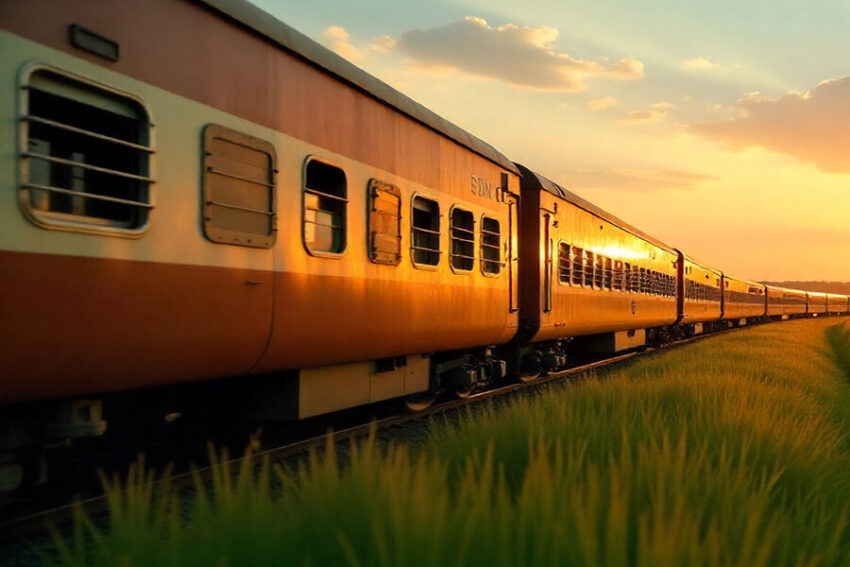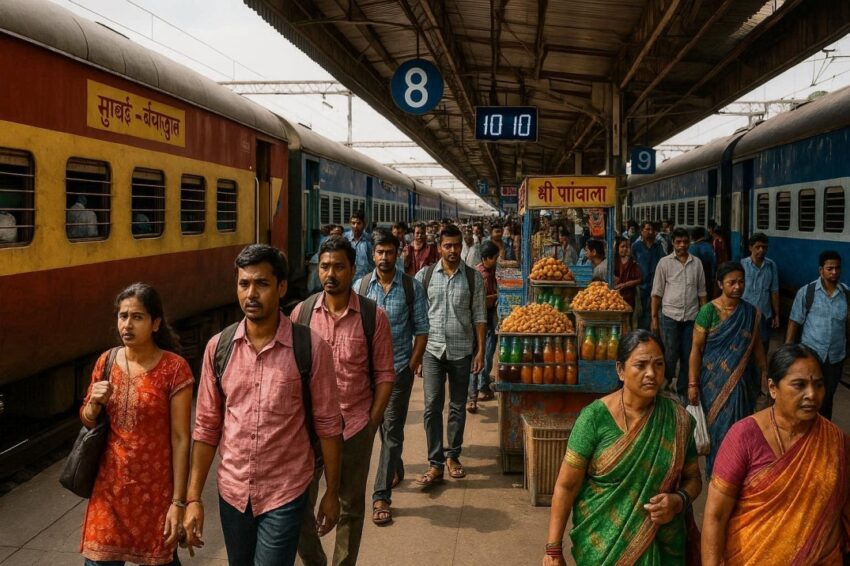Indian Railways Unveils Four New Vande Bharat Express Routes, Enhancing Rail Connectivity Between Key Cities and Offering Faster, More Comfortable Travel

Indian Railways is taking a bold step towards modernizing its long-distance train services with the upcoming launch of four new Vande Bharat Express trains. This expansion will strengthen rail connectivity across key regions, improving travel options for passengers and cutting down travel time significantly. The new routes will connect major cities including Bengaluru, Kochi, Firozpur Cantt, Delhi, Varanasi, Khajuraho, Lucknow, and Saharanpur, making it a landmark move in the government’s plan to revolutionize the rail network.
With these additions, the total number of Vande Bharat trains will increase, enhancing India’s semi-high-speed rail services. These new trains will benefit passengers traveling across Karnataka, Kerala, Punjab, Madhya Pradesh, Uttar Pradesh, and Delhi, opening up new opportunities for fast, comfortable travel, and better accessibility.
Bengaluru to Kochi: Connecting Two Southern Hubs with Speed and Comfort
The new Vande Bharat Express connecting Bengaluru to Kochi promises to be a game-changer for travelers between these two bustling cities. The service will cover a distance of 519 kilometers, reducing the travel time significantly, and will operate with state-of-the-art amenities to ensure a comfortable journey. The train, numbered 26651, will depart from KSR Bengaluru at 5:10 am, reaching Ernakulam Junction in Kochi by 1:50 pm, with several convenient halts along the way, including Krishnarajapuram, Salem, Erode, Tiruppur, Coimbatore, Palakkad, and Thrissur.
On the return journey, the train will leave Ernakulam Junction at 2:20 pm, reaching Bengaluru by 11:00 pm. This route is the third Vande Bharat service in Kerala, further strengthening the state’s connectivity following the success of the Thiruvananthapuram-Kasaragod and Thiruvananthapuram-Mangaluru routes.
Firozpur Cantt to Delhi: A Faster Link Between Punjab and the Capital
The Firozpur Cantt to Delhi Vande Bharat Express will provide faster travel between Punjab and the capital, covering 486 kilometers in just 6 hours and 40 minutes. This will provide an efficient option for passengers traveling between the two regions. The train will run six days a week, excluding Wednesdays, and will make key stops at Faridkot, Bathinda, Dhuri, Patiala, Ambala Cantt, Kurukshetra, and Panipat.
Train number 26462 will depart from Firozpur Cantt at 7:55 am, arriving in Delhi at 2:35 pm, while the return service, 26461, will leave Delhi at 4:00 pm and reach Firozpur Cantt at 10:35 pm. This improved service will reduce the time it takes to travel between these two major destinations, offering a faster and more comfortable journey for passengers.
Varanasi to Khajuraho and Lucknow to Saharanpur: Strengthening Connectivity in Northern India
The Varanasi-Khajuraho Vande Bharat Express will connect two of northern India’s most significant cultural and tourist destinations. The train will travel 443 kilometers in 7 hours and 40 minutes, offering a convenient and fast travel option. Stops along the way will include Vindhyachal, Prayagraj Chheoki, Chitrakut Dham, Banda, and Mahoba. Train number 26422 will depart Varanasi at 5:25 am and reach Khajuraho by 1:10 pm, while the return train, 26421, will depart from Khajuraho at 3:20 pm and arrive in Varanasi by 11:00 pm.
On the Lucknow-Saharanpur route, the Vande Bharat Express will run over 534 kilometers in 7 hours and 45 minutes, halting at Sitapur, Shahjahanpur, Bareilly, Moradabad, Najibabad, and Roorkee. The new train service will offer quicker and more comfortable travel between these two important cities, with significantly improved connectivity for passengers.
Modernizing India’s Railways: A Leap Towards Future-Ready Travel
The addition of these four new Vande Bharat Express trains will increase the total number of such services to 164, further cementing the role of Vande Bharat in the modernization of Indian Railways. These trains are equipped with modern features that elevate the travel experience, including CCTV cameras in all coaches, emergency alarm buttons, and communication units that allow passengers to speak with train staff.
One of the standout features of the new Vande Bharat trains is the inclusion of specialized lavatories designed for differently-abled passengers, enhancing accessibility for all. Along with comfortable seating, better air conditioning, and sound-proofing for a quieter journey, these trains are designed to offer passengers a premium travel experience.
A Vision for the Future of Indian Railways
The introduction of these four new Vande Bharat trains is part of a broader effort by the government to modernize and upgrade India’s rail system. As railways continue to play a crucial role in connecting the country’s far-reaching regions, the Vande Bharat Express trains represent the future of fast, safe, and comfortable travel in India. With more services planned for the coming years, the expansion of the Vande Bharat network is set to transform long-distance travel, allowing passengers to move across the country with greater ease and efficiency.
Indian Railways is launching four new Vande Bharat Express routes, connecting key cities like Bengaluru, Kochi, Delhi, and Lucknow. These new services promise faster travel times and enhanced comfort, modernizing long-distance rail travel across India.
By reducing travel times, offering modern amenities, and expanding the country’s rail connectivity, the Vande Bharat Express is making long-distance rail travel a more attractive and viable option for millions of passengers. As Indian Railways continues to evolve, these new services will undoubtedly help shape the future of rail travel in India.
The post Indian Railways Unveils Four New Vande Bharat Express Routes, Enhancing Rail Connectivity Between Key Cities and Offering Faster, More Comfortable Travel appeared first on Travel And Tour World.